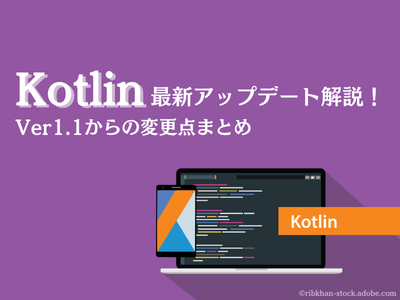Twitter風サービスの構築2
友人モデル
friendshipsテーブルはusersテーブルに所属しているので、 所属をbelongs_toで宣言しています。また、friend_idカラム(Friendshipクラスのfriend属性)も usersテーブルに所属しているのでbelongs_toで宣言しています、ただし属性名、カラム名が規約通りではないので :class_name、foreign_keyで設定しています。
user属性の方は friendshipsテーブルの user_id カラムに対応し、所属先は Userクラス(usersテーブル)という規約通りなのでclass_name、foreign_keyを省略しています。
以下はいずれも小さなメソッドばかりですが、コントローラーにはロジックを含む処理は書かずに、モデルに集めるようにするとコードの重複が減り、テストもしやすいメンテナンス性の高いコードになります。
- friendsクラスメソッドは、指定されたmy_idの友人の一覧を戻します。ただし、友人には自分自身も含まれるので、自分自身は含まないようにしています。
- not_friend_users クラスメソッドは、指定されたmy_idの友人でないユーザーの一覧を戻します。
- create_selfクラスメソッドは、指定されたmy_idの自分自身を友人として登録します。
not_friend_userssで使われている find_all_by_user_id(id)メソッドですが、これは find(:all, :conditions=>["user_id = ?", id]) と同等で、 "find_all_by_カラム名" のメソッドが実行されるとActiveRecordが動的にメソッドを生成します。
class Friendship < ActiveRecord::Base
belongs_to :user
belongs_to :friend, :class_name => "User", :foreign_key => "friend_id"
def self.friends(my_id)
Friendship.all(:conditions => ["user_id = ? and friend_id <> ?", my_id, my_id])
end
def self.not_friend_users(my_id)
User.all(:conditions => ["id not in (?)", Friendship.find_all_by_user_id(my_id).map(&:friend_id)])
end
def self.create_self(my_id)
Friendship.new(:user_id => my_id, :friend_id => my_id).save!
end
end
友人コントローラー
友人コントローラーは、友人の一覧、追加、削除を行うだけの簡単なコントローラーです。
class FriendshipsController < ApplicationController
def index
@friendships = Friendship.friends(@user_id)
end
def new
@friendship = Friendship.new
@not_friend_users = Friendship.not_friend_users(@user_id)
end
def create
@friendship = Friendship.new(params[:friendship])
@friendship.user_id = @user_id
if @friendship.save
flash[:notice] = 'フォローに登録しました'
redirect_to(friendships_url)
else
render :action => "new"
end
end
def destroy
@friendship = Friendship.find(params[:id])
@friendship.destroy
redirect_to(friendships_url)
end
end
つぶやきモデル
statusesテーブルはusersテーブルに所属しているので、belongs_toで宣言しています。
all_frendsクラスメソッドは、指定されたmy_idユーザーの友人のつぶやきの一覧を取得しています。
api_dataメソッドはCurl等のアクセスに対し、戻すデータを組み立てるメソッドです。データは statusesから所得したレコードをHashに変換したものです。ただし user_idの代わりにユーザー情報を含むHash、{id=>ユーザーid、 screen_name=>ユーザー名、profile_image_url=>アイコンのURL}を"user"をキーとして追加しています。
また、画像のURLはモデルが関知すべき情報ではないので、image_url引数で画像URLを求める手続きオブジェクト(関数)を渡してもらい、それを image_url.call で呼び出しています。
class Status < ActiveRecord::Base
belongs_to :user
def self.all_frends(my_id)
Status.all(:conditions => ["friendships.user_id = ?", my_id],
:joins => "JOIN friendships ON statuses.user_id = friendships.friend_id",
:order => "created_at DESC")
end
def api_data(image_url)
status_attrs = self.attributes
user_attrs = User.find(self.user_id, :select => "id,screen_name").attributes
user_attrs["profile_image_url"] = image_url.call(self.user.profile_image_path)
status_attrs["user"] = user_attrs
status_attrs
end
end
つぶやきコントローラー
つぶやきコントローラーは、友人のつぶやき一覧と、つぶやきの新規作成が主な処理です。ただし連載2回目同様にCurlのコードをクライアントに送るstart処理もあります。この処理自体の認証は外してあります。
つぶやき一覧(friends_timeline)処理では、つぶやき情報を取得し、HTMLやJSON形式でデータを戻しています。ただし、JSONデータに含まれるアイコン画像のURLを戻す手続きオブジェクト(関数)をto_image_url変数に代入し、api_dataメソッドに渡しています。 index は friends_timeline にリダイレクトするようにしました。
つぶやきの新規作成(create)処理は Scaffoldの作ったコードのXMLをJSONに、user_idの設定を変更しただけです。
class StatusesController < ApplicationController
skip_before_filter :authenticate, :only => :start
def index
redirect_to friends_timeline_statuses_url
end
def start
render :layout => false, :content_type => 'text/vnd.curl'
end
def friends_timeline
@statuses = Status.all_frends(@user_id)
@status = Status.new
to_image_url = lambda{|path| url_for.sub(/ #{friends_timeline_statuses_path}$/, '/images/') + path}
respond_to do |format|
format.html # index.html.erb
format.json { render :json => @statuses.map{|e| e.api_data(to_image_url)}.to_json }
end
end
def create
@status = Status.new(params[:status])
@status.user_id = @user_id
respond_to do |format|
if @status.save
format.html { redirect_to friends_timeline_statuses_url }
format.json { render :json => @status, :status => :created, :location => @status }
else
format.html { render :action => "new" }
format.json { render :json => @status.errors, :status => :unprocessable_entity }
end
end
end
end
Curlクライアントの変更
このTwitter風サービスにCurlクライアントからアクセスするにはサーバのURLを次のように変更します。
{let server_url = "http://localhost:3000/"}
まとめ
今回は、Curlを使ったTwitterクライアントとRuby on Railsを使った Twitter風サービスを作ってみました。 Ruby on Railsのサーバ側は複数テーブルの関連や認証などを含み、本格的なシステムの作る際の参考になると思います。また、CurlもRuby on RailsもJSONデータなどを簡単に扱えるのでTwitterのような Web+APIのシステムが手軽に作れる事を感じていただけたかと思います。






























.png)
















